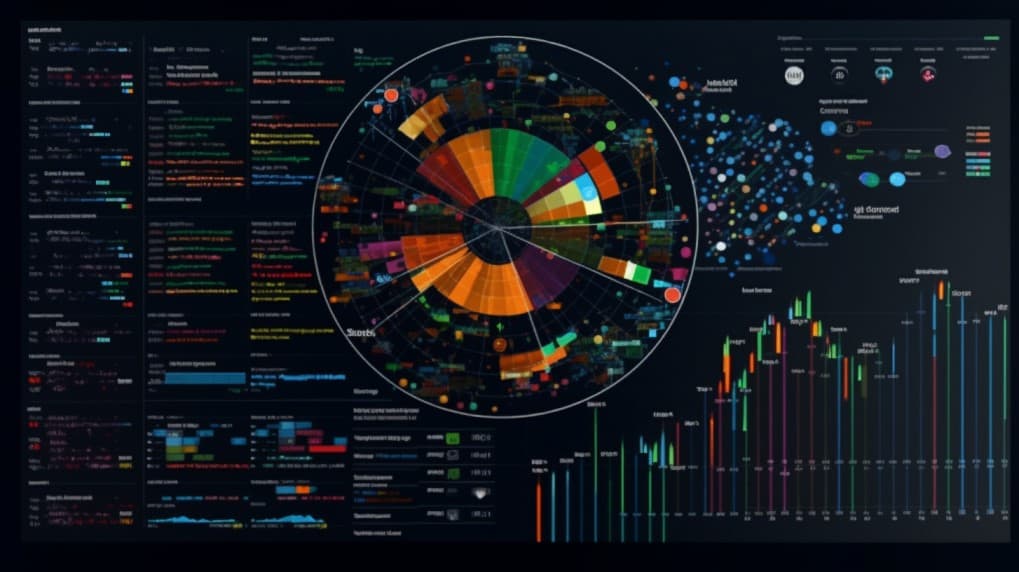
Why stocks move with SPY?
Understanding the factors that drive the movements of stocks is crucial for investors seeking to make informed decisions in the stock market. One phenomenon that has captured the attention of investors is the correlation between individual stocks and the SPY, or SPDR S&P 500 ETF Trust. SPY is an exchange-traded fund (ETF) that aims to track the performance of the S&P 500 index, which represents a broad basket of large-cap U.S. stocks. In this article, we will explore the reasons why stocks often move in conjunction with SPY and shed light on the dynamics behind this correlation. By gaining insights into the relationship between stocks and SPY, investors can enhance their understanding of market trends and potentially make more informed investment decisions.
Understanding SPY: An to ETFs
Exchange-Traded Funds (ETFs) have gained immense popularity among investors as a convenient and cost-effective way to gain exposure to various financial markets. One of the most widely recognized ETFs is the SPDR S&P 500 ETF Trust (NYSE: SPY), commonly referred to as SPY. SPY tracks the performance of the S&P 500 index, which is composed of 500 of the largest publicly traded companies in the United States. This article aims to explore why stocks often move in conjunction with SPY and answer some frequently asked questions about this correlation.
The Impact of Market Sentiment on SPY and Stocks
Market sentiment plays a crucial role in driving the movements of both SPY and individual stocks. When investors have a positive outlook on the market, they tend to buy more shares of SPY, which leads to an increase in its price. As SPY represents a broad-based index like the S&P 500, it reflects the overall market sentiment. Consequently, when SPY rises, it often indicates a positive market sentiment, leading to an uptick in individual stock prices. Conversely, during periods of negative sentiment, investors may sell their SPY shares, causing both SPY and stocks to decline.
 SPY overlap Why stocks move with SPY?
SPY overlap Why stocks move with SPY?
The Role of Sector Allocation in SPY and Stock Movements
Another factor influencing the correlation between SPY and individual stocks is the sector allocation within the S&P 500 index. The S&P 500 consists of multiple sectors, such as technology, healthcare, financials, and energy, each with its own set of companies. Changes in the performance of a specific sector can impact SPY and the related stocks within that sector. For example, if the technology sector experiences significant growth, SPY will likely rise, and technology-related stocks will also tend to move in a similar direction.
SPY as a Proxy for Market Performance
Given that SPY tracks the S&P 500 index, it serves as a benchmark for overall market performance. Many professional investors and fund managers use SPY as a reference point to gauge the performance of their portfolios. Therefore, any significant movements in the broader market, such as changes in economic indicators, geopolitical events, or monetary policy decisions, can impact both SPY and individual stocks. As a result, investors closely monitor SPY's movements to gain insights into market trends and make informed investment decisions.
Stocks move in conjunction with SPY due to various factors, including market sentiment, sector allocation, and SPY's role as a market performance proxy. Understanding the relationship between SPY and individual stocks can help investors make more informed investment decisions. By monitoring SPY's movements and staying informed about market trends, investors can gain insights into the overall market sentiment and potential opportunities for their portfolios.
Disclaimer: This article is for informational purposes only and does not provide investment advisory services.
Source 1: SPY issuer website
Source 2: Reuters article about SPY
SPY quote and analysis
Discover the top holdings, correlations, and overlaps of ETFs using our visualization tool.
Our app allows you to build and track your portfolio.
To learn more about the SPY SPDR S&P 500 ETF Trust, access our dedicated page now.
FAQ
What are SPY stocks?
SPY, or SPDR S&P 500 ETF Trust, is an exchange-traded fund that aims to track the performance of the S&P 500 Index. It does not represent individual stocks but rather holds a diversified portfolio of stocks that are included in the S&P 500 Index.
What stocks make up SPY?
SPY holds a portfolio of stocks that aims to replicate the performance of the S&P 500 Index. The S&P 500 Index includes 500 large-cap stocks from various sectors. Some of the well-known companies included in SPY are Apple, Microsoft, Amazon, Alphabet (Google), Facebook, and Berkshire Hathaway.
What does SPY stock stand for?
SPY is an acronym for "Standard & Poor's DeposITAry Receipts." It is often referred to as the "Spider" due to its ticker symbol SPY and is one of the most widely recognized and traded exchange-traded funds in the world.
How does SPY affect stocks?
SPY's performance is closely tied to the performance of the S&P 500 Index. As an ETF that tracks this index, it reflects the collective performance of the stocks in the S&P 500. Changes in the price of SPY can be influenced by market conditions, investor sentiment, and the performance of the underlying stocks. SPY's trading activity can also impact the broader stock market as it is one of the most heavily traded ETFs.
How safe is SPY stock?
SPY is a relatively safe investment compared to investing in individual stocks due to its diversification across 500 large-cap stocks in the S&P 500 Index. However, it's important to remember that all investments carry risks, and the value of SPY can fluctuate with market conditions. While SPY provides exposure to a broad range of stocks, it is not immune to market downturns or fluctuations.





